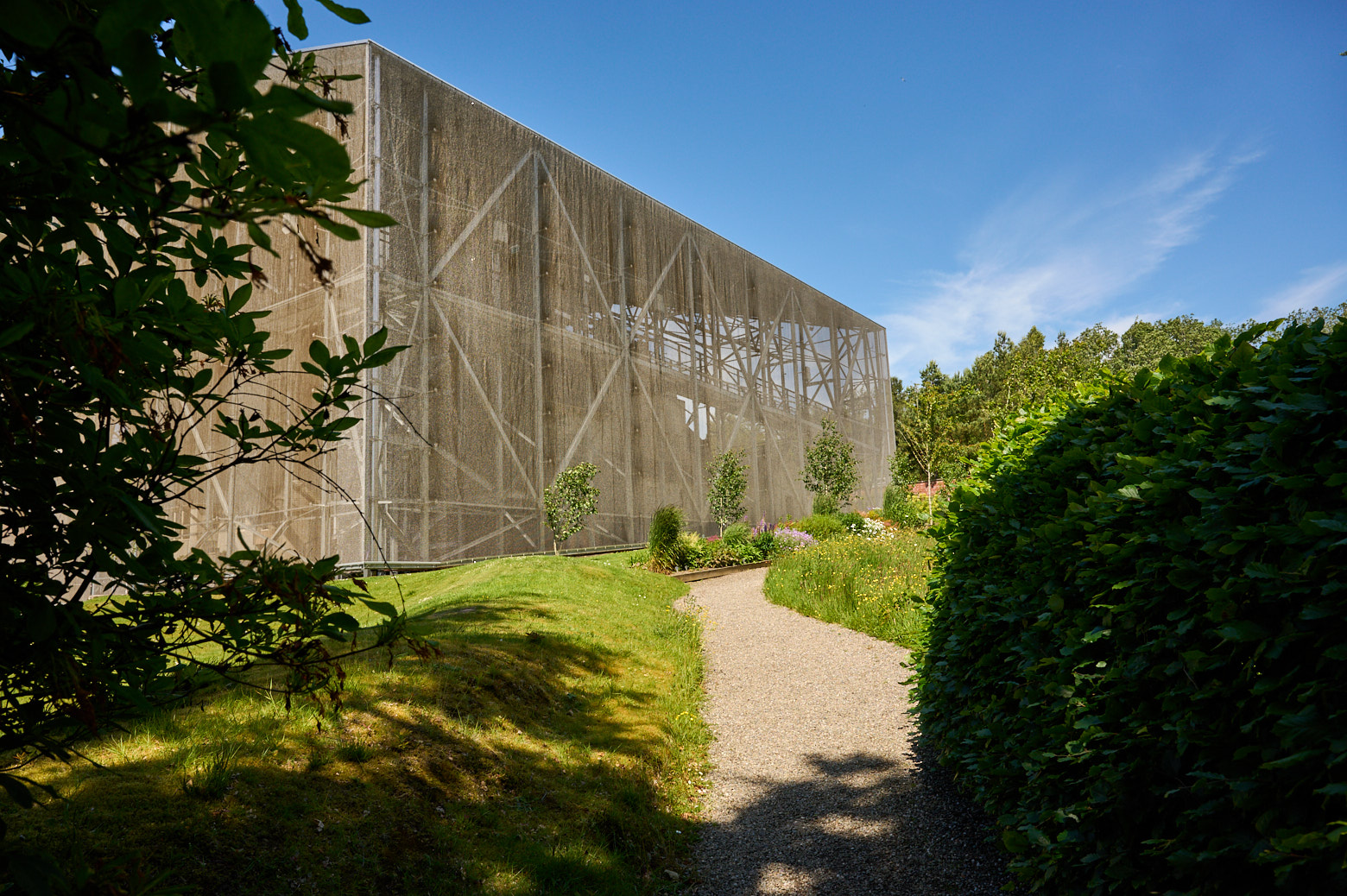
After a day of strolling around Glasgow I picked up my rental car and started driving towards Oban for my first ferry – but already had planned to stop at The Hill House in Helensburgh near Glasgow.
Commissioned by Glasgow book publisher Walter Blackie, up-and-coming architect Charles Rennie Mackintosh and artist Margaret Macdonald worked collaboratively to create almost everything you see here, from the building itself to the furniture and textiles. (National Trust Scotland)
The first view of the Hill House was a view of a box! This transparent porous “box” was added around the house around 2019 to protect the building and help it to dry out again.
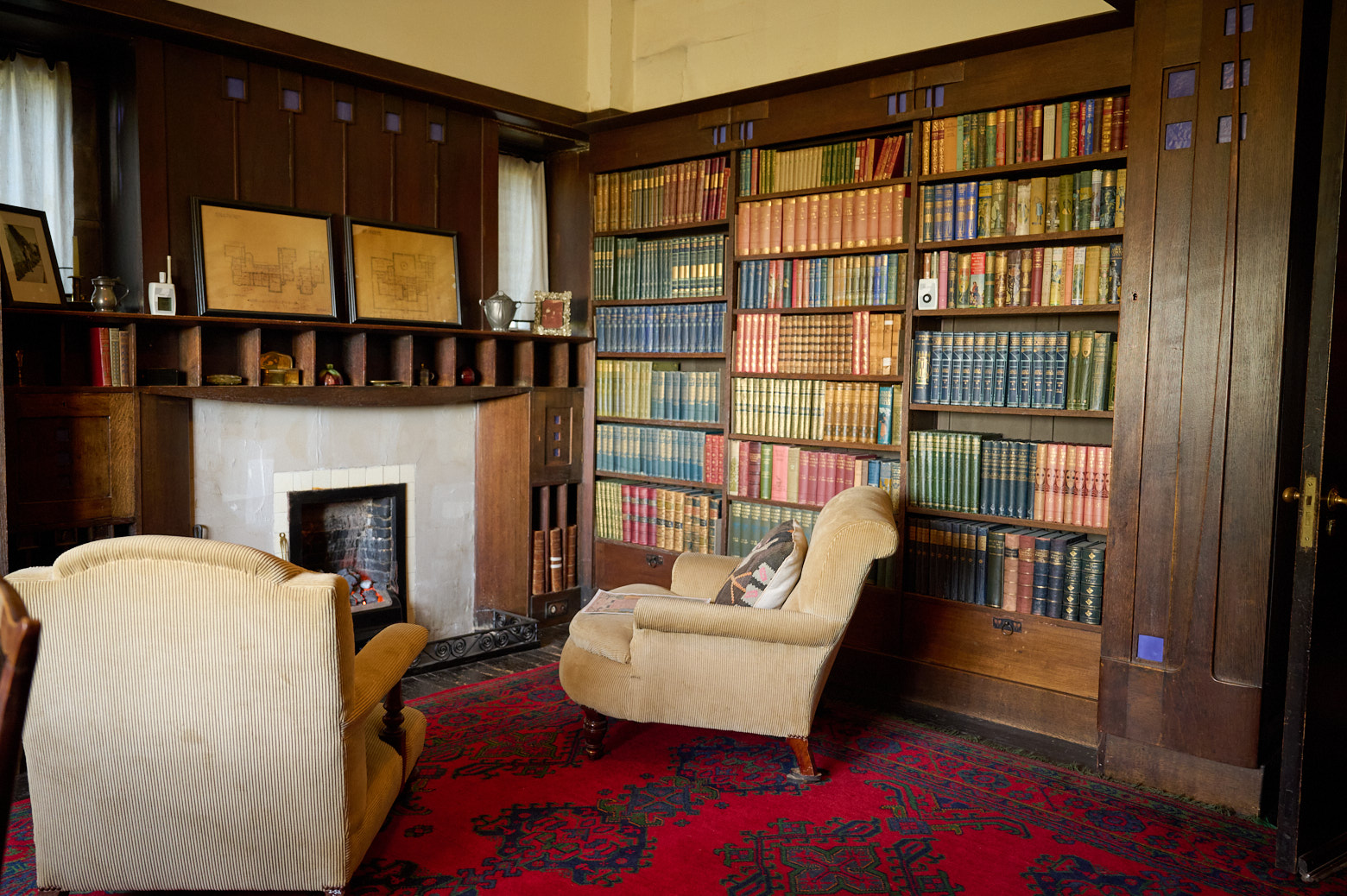
Walter Blackie purchased the grounds in 1902 for his future family home, he then commissioned the up-and-coming architect Charlie Macintosh – The Hill House was completed in 1904 and is considered Machintosh’s domestic masterpiece.
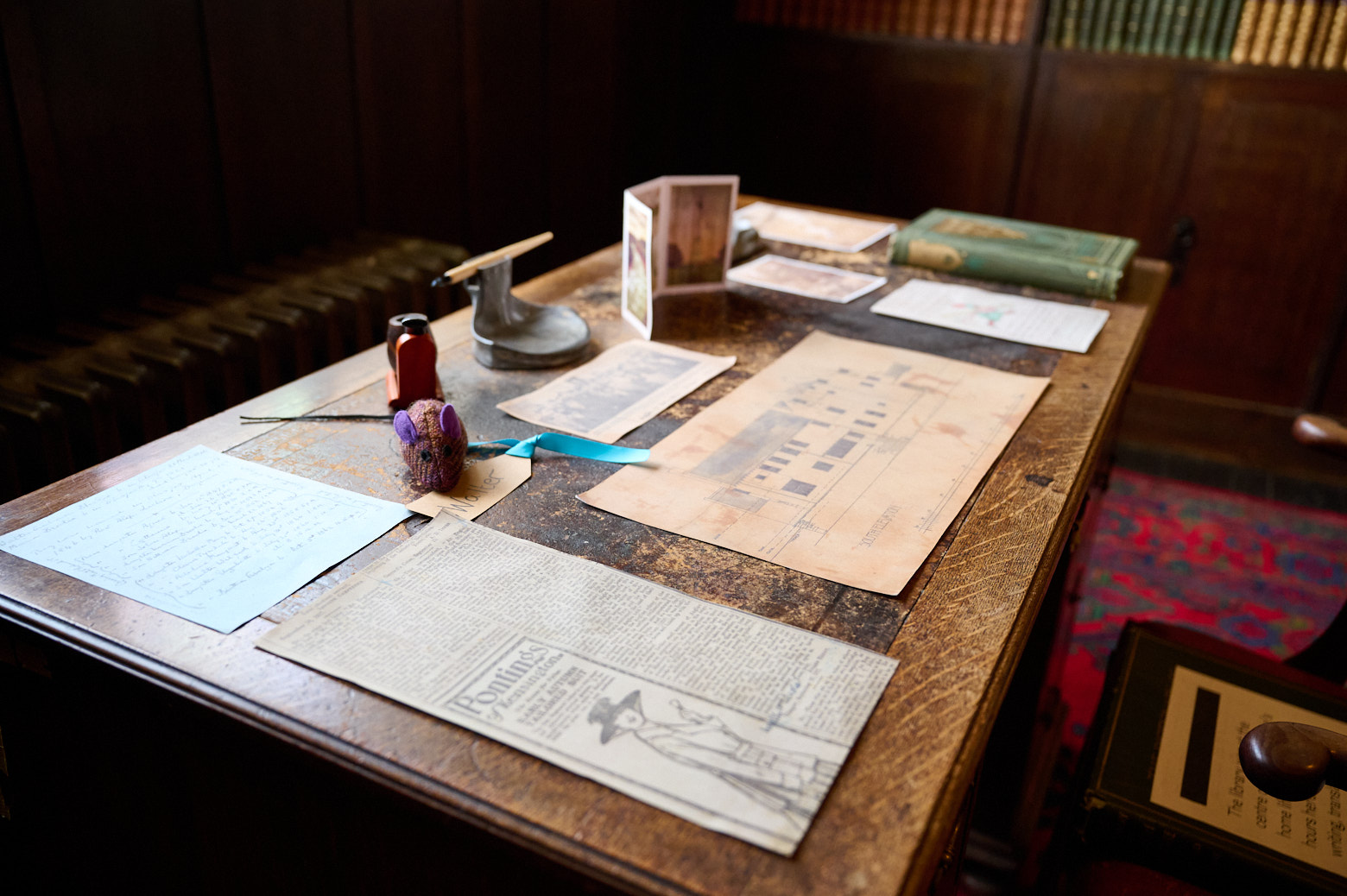
Mackintosh believed that to design a home properly he had to understand the needs of its occupants, so he spent a great deal of time with the Blackie family during the project’s initial stage to ensure his proposal suited their lifestyle. (dezeen.com)
Blackie later described the process that they designed from the inside out. Macintosh observed how the family and also the staff would use the house and what they would need.
The building displays typical Mackintosh influences, with a robust exterior referencing Scottish vernacular architecture, contrasting with a highly ornamental interior, featuring oriental themes alongside art-nouveau and art-deco details. (dezeen.com)
Macintosh and his wife the artist Margaret MacDonald designed almost every element of the house, from the architecture to the furniture, fireplaces, lighting and textiles.
Margaret was an established artist before they met, and helped to define the Mackintosh style. From the embroidered hangings in the main bedroom to the ‘Sleeping Princess’ panel above the fireplace in the drawing room, Margaret was responsible for some of the house’s most famous features. (National Trust for Scotland)
But Blackie couldn´t afford to finish the interior entirely according to Mackintosh’s designs, so the architect focused on the main spaces of the hallway, library, master bedroom and drawing room.
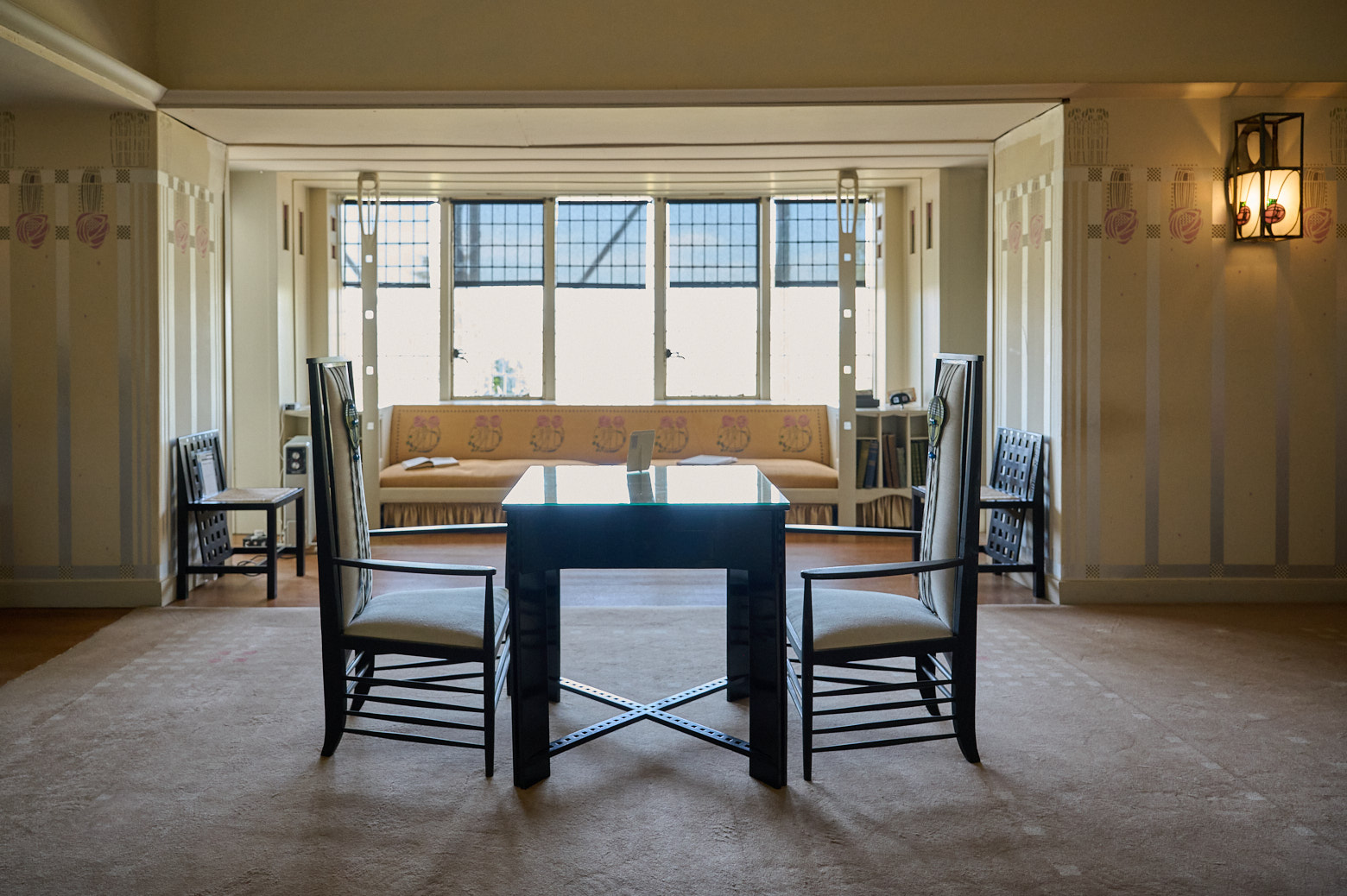
It is a play of light and dark as well as masculine and feminine. From the masculine dark rooms like the library and entrance to the bright feminine rooms like the master bedroom and the drawing room, making the most of the natural light.
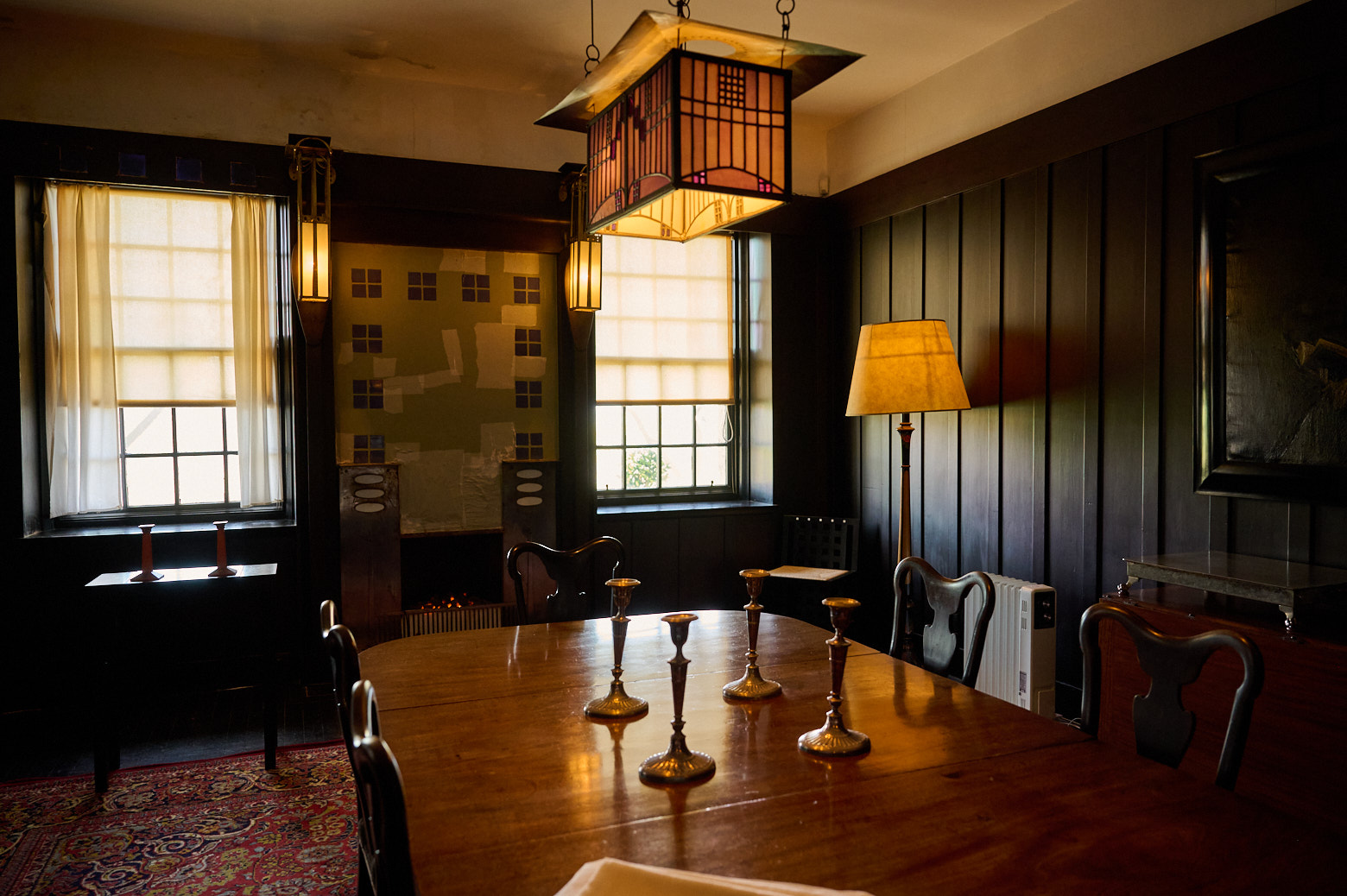
Charles and Margaret’s style was avant-garde, and some people criticised the lack of colour. Walter Blackie’s daughter, Ruth, preferred to describe it as ‘an unfussiness’. (National Trust for Scotland)
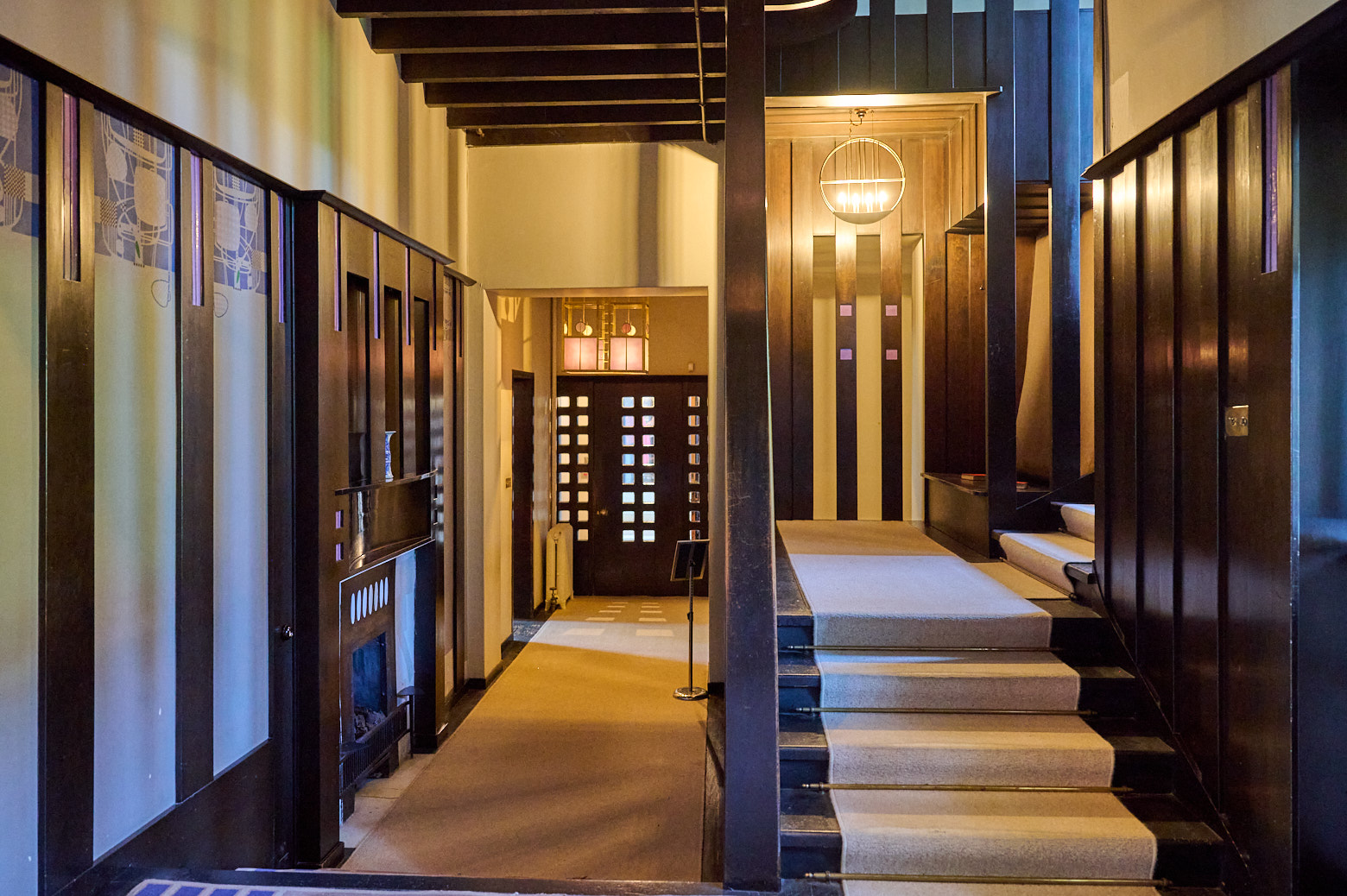
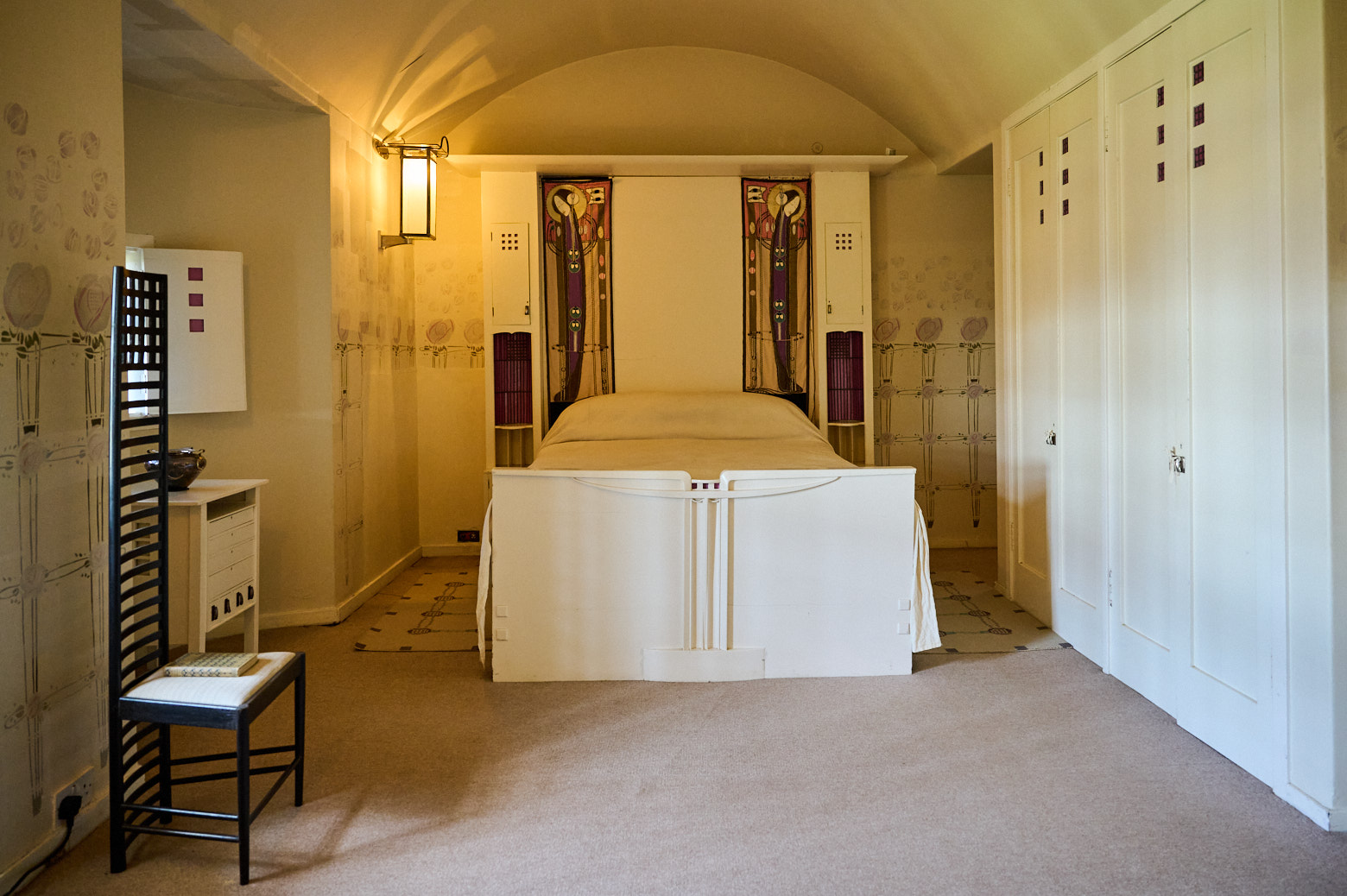
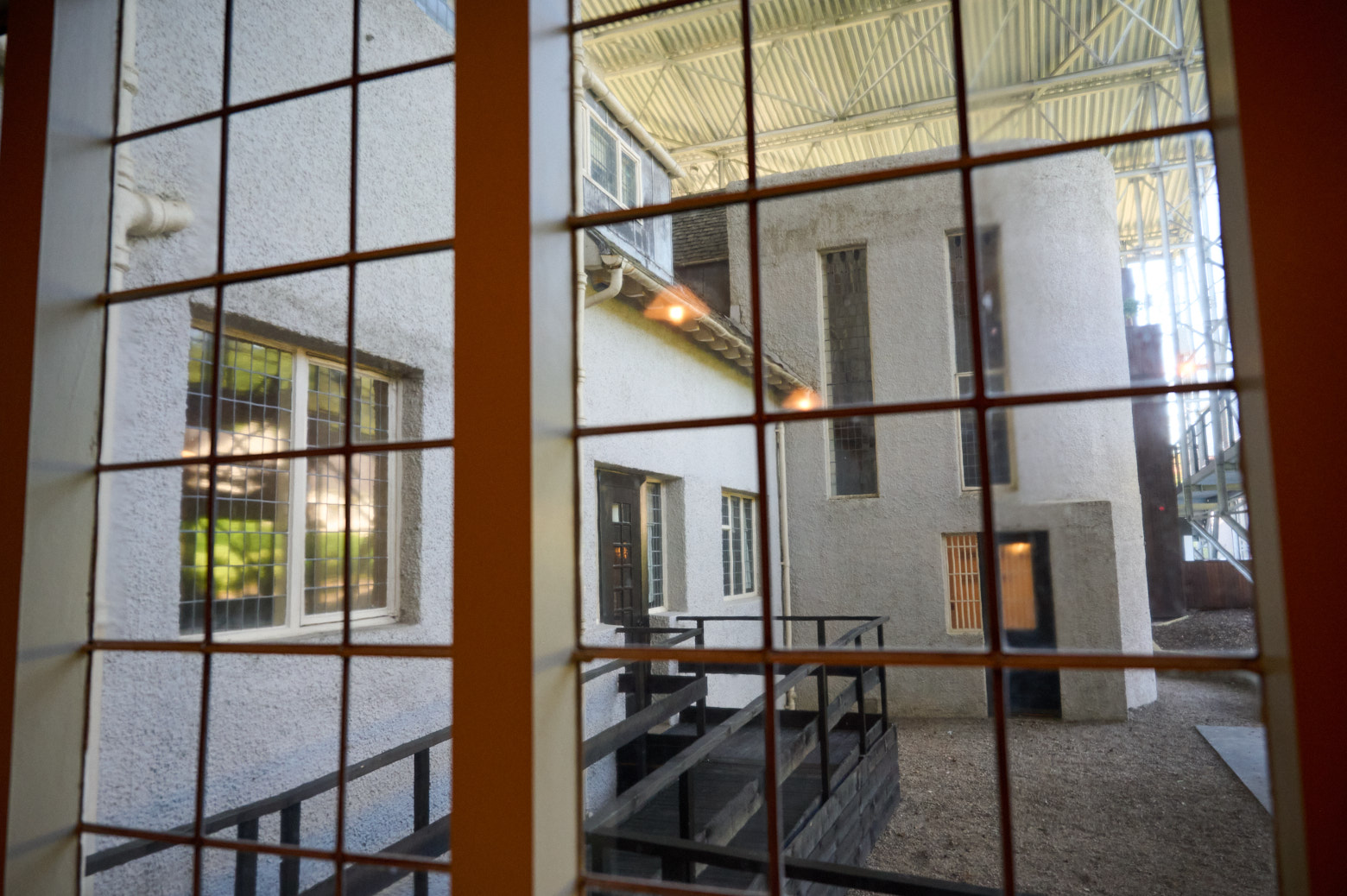
Macintosh was ahead of his time in Britain, even though he was greatly admired in Europe. There were exhibitions of his work in Vienna and he used to be in contact with Josef Hoffmann. But the Hill House never received the glowing reviews that would help Mackintosh continue his ground-breaking work. After a few more commissions in Glasgow Macintosh moved to London and designed book covers for Walter Blackie. Later he spent time in France and painted watercolours.
It was not until the late 1920s and 30s that the work of Charles Rennie Mackintosh began to be appreciated more widely. But for Charles it was too late. After years of ill health, he died in London in December 1928, aged 60. (National Trust for Scotland)
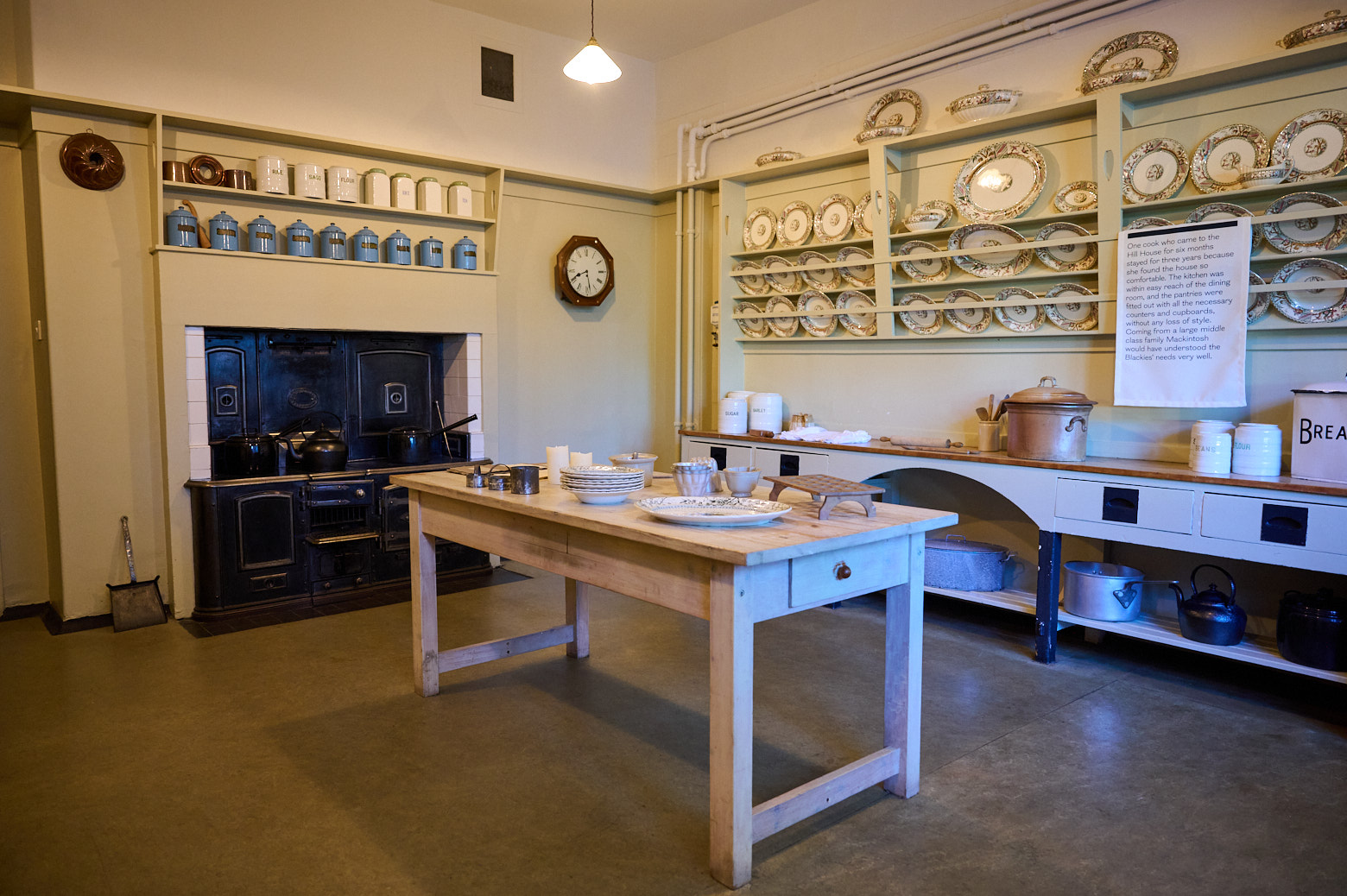
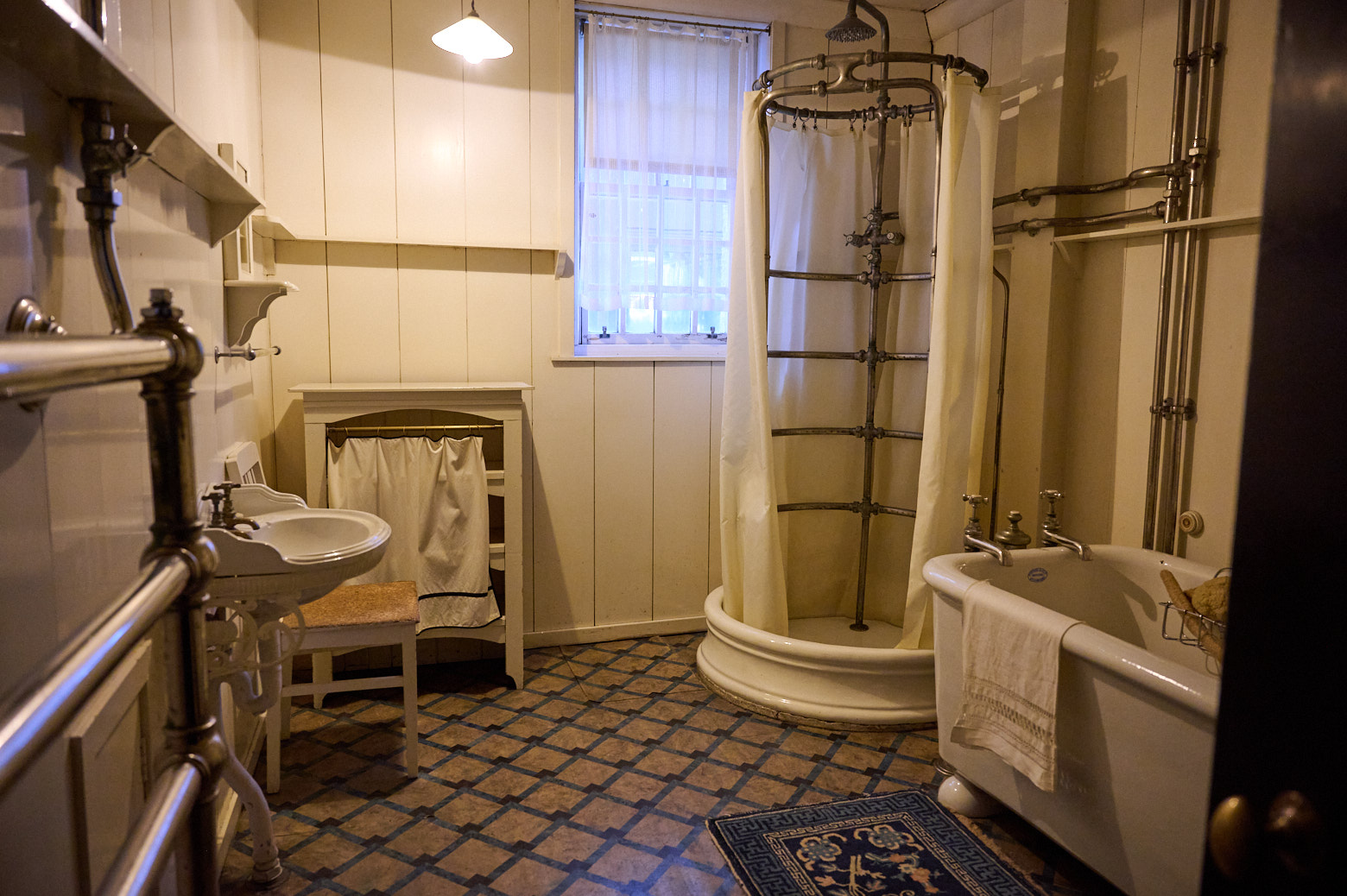
The Blackie family continued to live in the Hill House and cherished their unique home until the upkeep with the water ingress problems became too hard and they gave the house to the National Trust of Scotland in the 1980s.
The house was mainly built out of Portland cement which just isn´t suitable for the Scottish weather and there were many problems with water ingress. In 2017 a study of the house showed that the water damages were so big that the whole structure was at risk. The National Trust of Scotland started a ten-year project to save the Hill House. An enormous see-through structure was designed by London architecture studio Carmody Groarke to protect the house from the wind and rain.
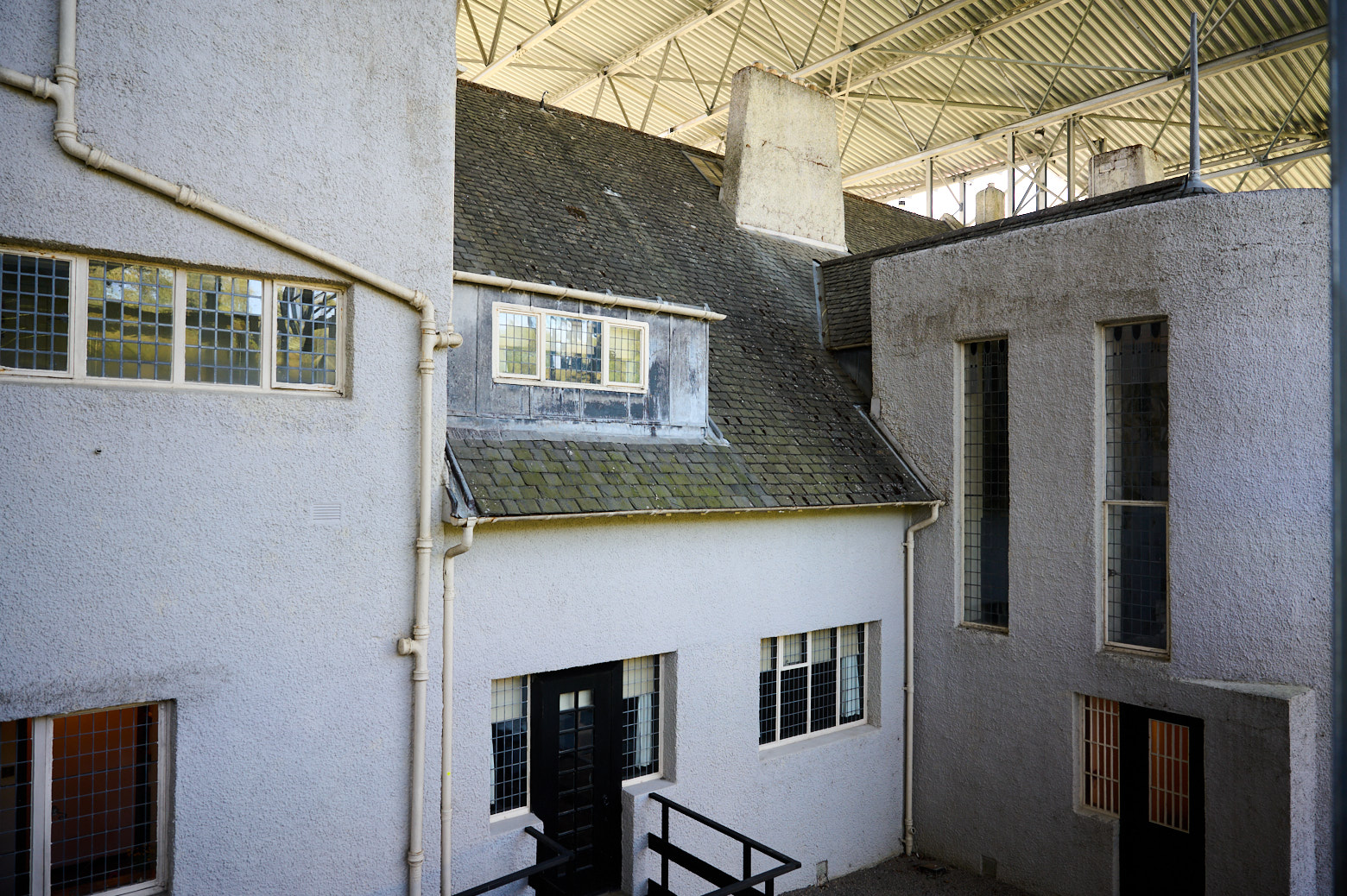
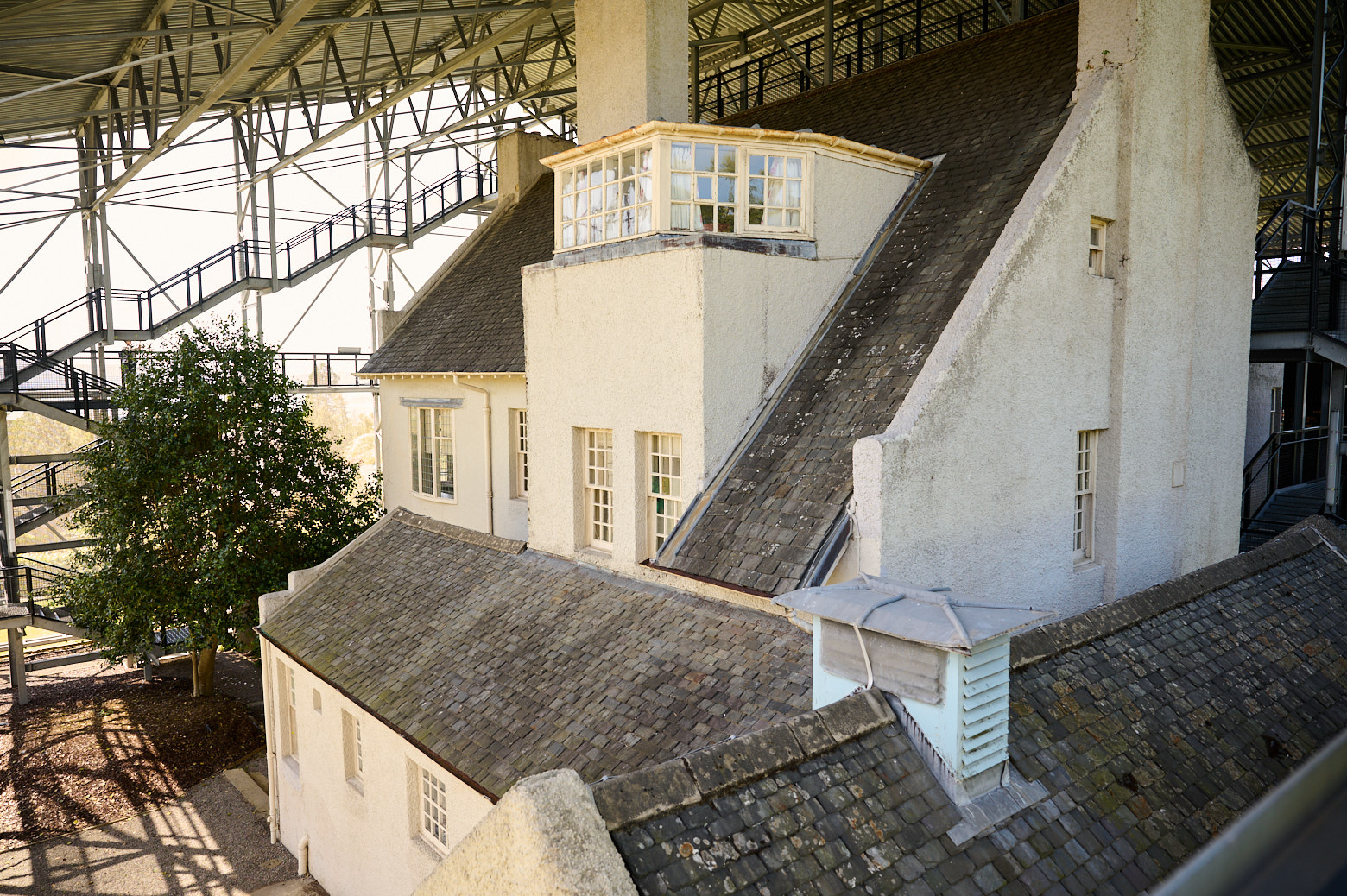
Stairs along the box and gangways now offer us truly special views of the house – you can even walk over the rooftop and admire it from all sides.

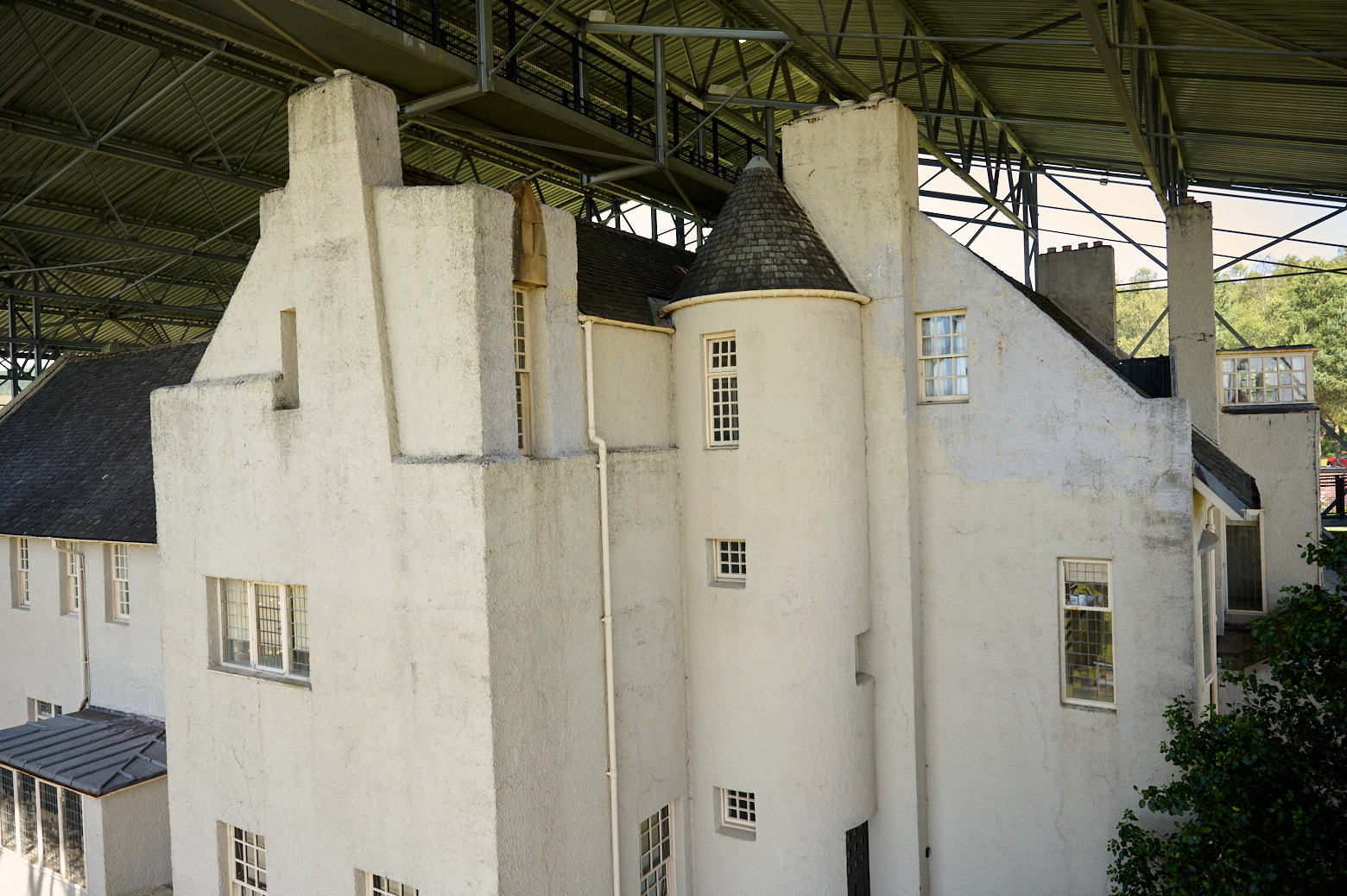
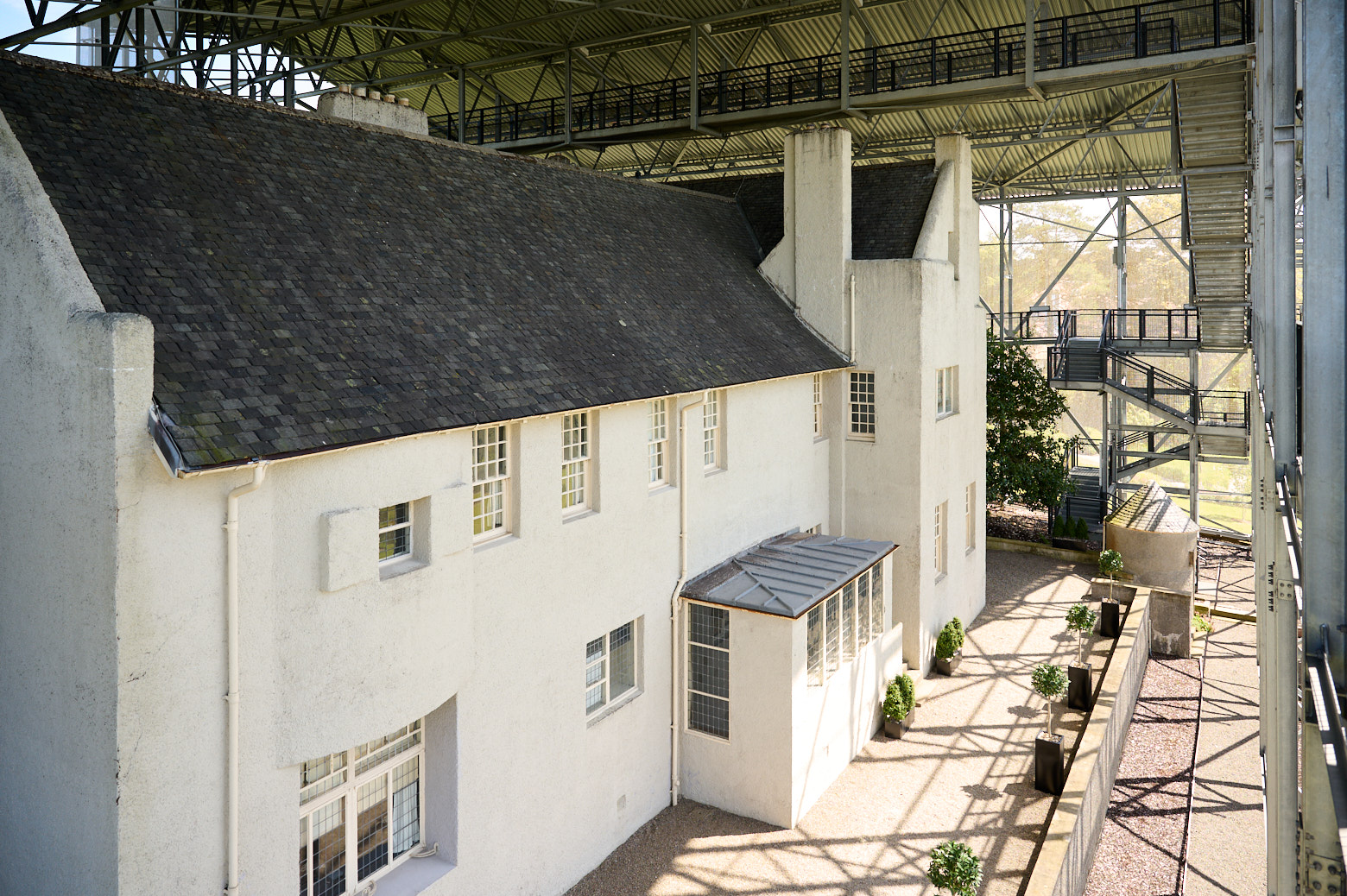
The Hill House is surrounded by a stunning garden and there is also a coffee house – I would definitely recommend visiting this former residential home. It was fun to see influences that might have come from Macintosh’s visits to Vienna.
Leave a Reply